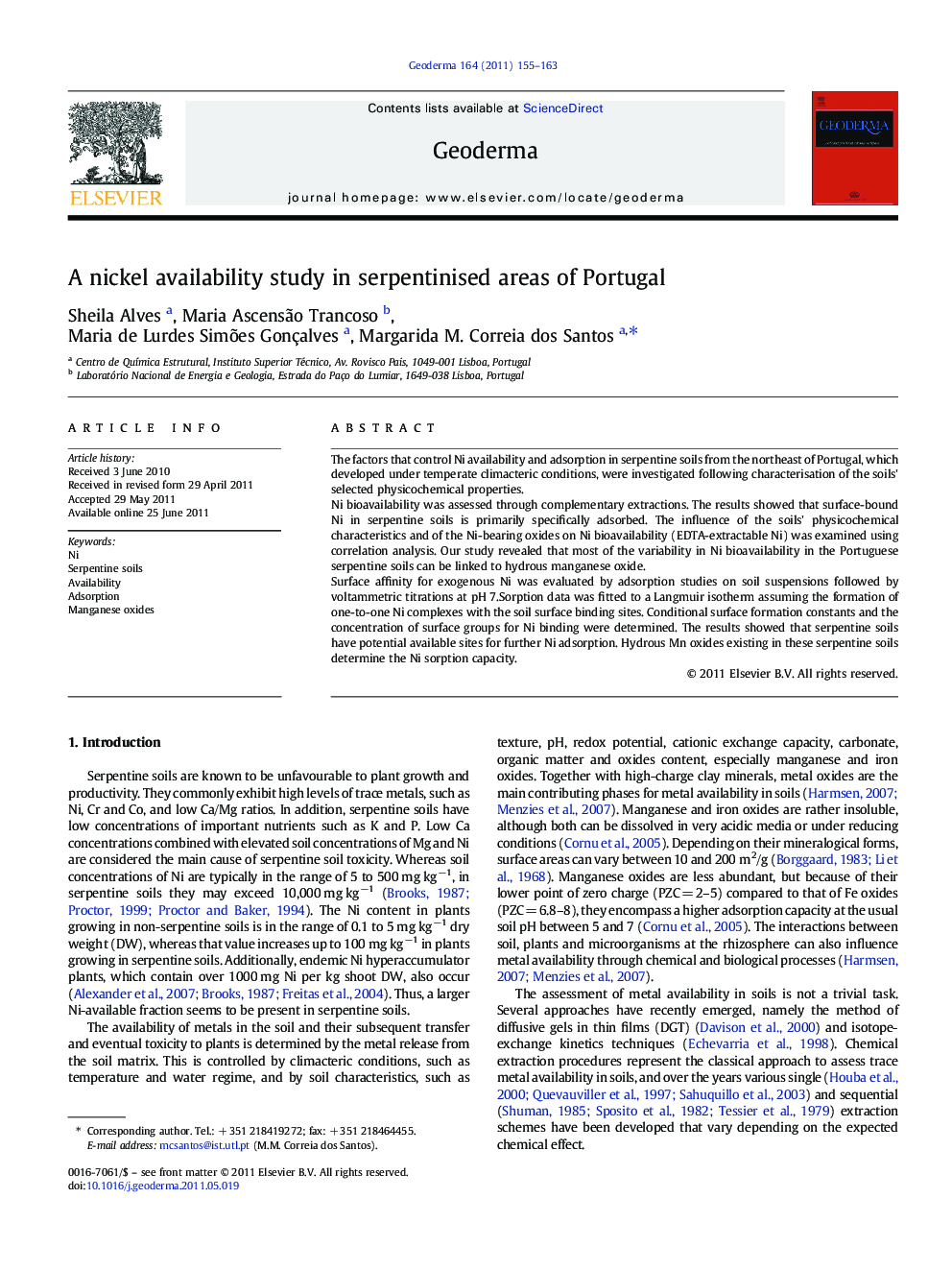| کد مقاله | کد نشریه | سال انتشار | مقاله انگلیسی | نسخه تمام متن |
|---|---|---|---|---|
| 4574137 | 1629506 | 2011 | 9 صفحه PDF | دانلود رایگان |

The factors that control Ni availability and adsorption in serpentine soils from the northeast of Portugal, which developed under temperate climacteric conditions, were investigated following characterisation of the soils' selected physicochemical properties.Ni bioavailability was assessed through complementary extractions. The results showed that surface-bound Ni in serpentine soils is primarily specifically adsorbed. The influence of the soils' physicochemical characteristics and of the Ni-bearing oxides on Ni bioavailability (EDTA-extractable Ni) was examined using correlation analysis. Our study revealed that most of the variability in Ni bioavailability in the Portuguese serpentine soils can be linked to hydrous manganese oxide.Surface affinity for exogenous Ni was evaluated by adsorption studies on soil suspensions followed by voltammetric titrations at pH 7.Sorption data was fitted to a Langmuir isotherm assuming the formation of one-to-one Ni complexes with the soil surface binding sites. Conditional surface formation constants and the concentration of surface groups for Ni binding were determined. The results showed that serpentine soils have potential available sites for further Ni adsorption. Hydrous Mn oxides existing in these serpentine soils determine the Ni sorption capacity.
Research highlights
► New data on Ni availability and adsorption in serpentine soils with temperate characteristics.
► Ni in serpentine soils from the northeast of Portugal is primarily specifically adsorbed.
► Most of Ni variability and bioavailability can be linked to manganese oxide.
► Serpentine soils have potential available sites for further Ni adsorption.
Journal: Geoderma - Volume 164, Issues 3–4, 15 September 2011, Pages 155–163